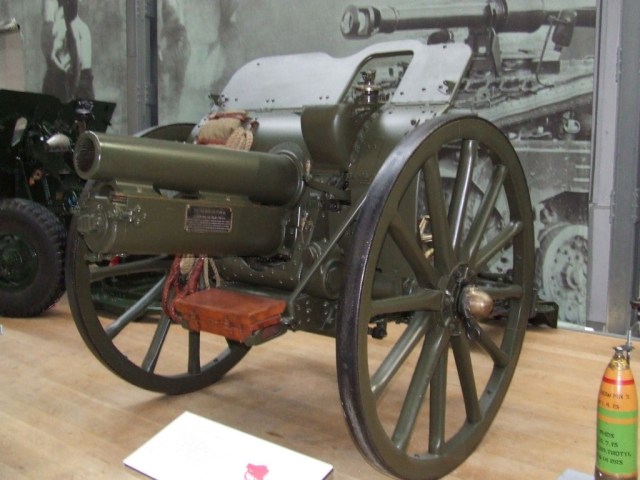
Corporal Arthur Openshaw Siddell Smith
|
Listen now
Getting your Trinity Audio player ready...
|
This post about Corporal Arthur Smith, appears with grateful thanks to Mark Hone, Bury Grammar School.
Bury Grammar School Centenary Roll of Honour: Corporal Arthur Openshaw Siddell Smith served in ‘D’ Battery, 23rd Brigade, Royal Field Artillery. He died of his wounds on 9th June 1918. He was 21 years old.
Arthur Smith and his brother Harry are one of the seven pairs of brothers commemorated on the Bury Grammar School Great War Memorial. He was born on 3rd March 1897, the second son of William Siddell Smith, an accountant, and his wife Ada.
The family lived at 132 Chesham Road in Bury. Harry’s first cousins Richmal Crompton Lamburn and her brother John lived in the same road. Richmal later became a popular writer and created the immortal schoolboy character, ‘Just William’, who was based partly on her brother. Their father, Revd. Edward Lamburn, was a long-serving Classics Master at Bury Grammar School.

Arthur’s cousin, Richmal Crompton Lamburn achieved fame as the creator of ‘Just William’ (BGS Archive, Margaret Buffie’s Website)
Arthur Smith at school
After early education at St. John’s Elementary School, Arthur joined Form Lower VA at BGS on 13th September 1909. His form master was his uncle, E.J.S. ‘Lammy’ Lamburn and his classmates included the 1914 School Captain John Hartington, who was killed in 1917. Also Thomas Hope Floyd, who would serve as an officer with 2/5th Lancashire Fusiliers and wrote two books about his wartime experiences.
Arthur Smith was a member of Derby House, like his brother and cousin John Lamburn. His brother Harry had been at the school since 1906 but left at Christmas 1909. Arthur stayed until 12th March 1912, by which time he was a member of Form Upper VA.

The staff of BGS in early 1912, at around the time Arthur Smith left the school. His uncle E.J.S. Lamburn is second from right on the front row, next to the Headmaster, W.H. Howlett.
St Mark’s Church
Arthur was not an academic high-flyer and did not pass the Oxford Local Junior Exams in 1911. However, he was a member of the school’s Officers Training Corps, achieving the rank of Lance-Corporal. After school he joined the firm of Pugh, Davies and Co, Manchester, for whom he was still working when he enlisted in the army in 1915.
According to his Bury Times obituary, Arthur attended St Mark’s Church, Bury. His brother was a member of the congregation at St. John’s. Arthur’s uncle, E.J.S. Lamburn, died suddenly in March 1915, while in his 39th year of teaching at BGS. In January 1916, Arthur’s brother Harry (pictured below) died of illness while training with the Royal Fusiliers at Aldershot.

Royal Field Artillery
By the Spring of 1918, Arthur had been made a Corporal in ‘D’ Battery, 23rd Brigade, Royal Field Artillery. D Battery consisted of six 4.5” howitzers, guns which fired up to four shells per minute to a maximum range of 6000 metres. The howitzer is designed to fire its shells in a high arc so that they plunge down at a steep angle to hit trenches and other fixed defences from above.

Above: 4.5” Howitzer (‘Firepower’, the Royal Artillery Museum, London).
With Christ – far better
23rd Brigade RFA had been heavily engaged in the desperate defensive battles of the Spring of 1918. At the beginning of June, they were stationed in the Villers Bretonneux sector. A few weeks earlier, British and Australian troops had first lost, then recaptured Villers-Bretonneux in bitter fighting which had seen the death of BGS old boy CSM Tom Lucas.
On 4th June, ‘D’ Battery were then moved to positions in the village of Fouilloy, on the south bank of the River Somme, a few kilometres north of Villers Brettoneux. While there, the battery came under sporadic German artillery fire and on 6th June, three men were wounded. Later, on the 9th, the Brigade War Diary records that one sergeant, one corporal and two gunners were wounded. The Corporal was Arthur Smith.
His obituary in the ‘Bury Times’ records that ‘he died from wounds about the face, while being conveyed to a dressing station in France’. The obituary describes him as a Bombardier but by the time of his death he had been promoted to the rank above, Corporal.
16848 Corporal Arthur Openshaw Siddell Smith is buried in Grave III.C.39 of Daours Communal Cemetery Extension, four kilometres west of Fouilloy. His father later paid for the inscription ‘With Christ-Far Better’ to be put on his headstone, the same words inscribed on his brother Harry’s grave at Aldershot Military Cemetery.

The grave of Arthur Smith at Daours Cemetery (Find A Grave)
Sources: Bury Grammar School Archive; ‘Bury Times’; War Diary of 23rd Brigade RFA, Ancestry; Commonwealth War Graves Commission; ‘Find A Grave’ website; Contributors to the Great War Forum.
Written by M.J. Hone 2018
[For other similar posts on the church website please see these about Harold Wild, and Lance Corp John Smith.]






No Comment